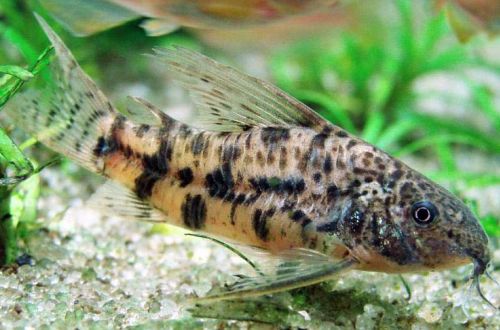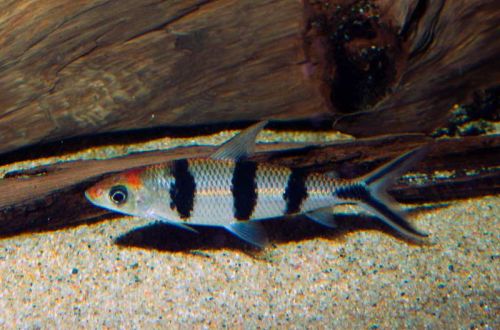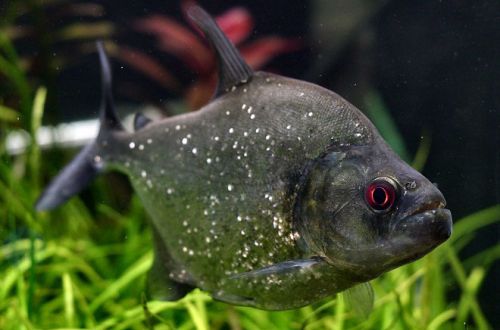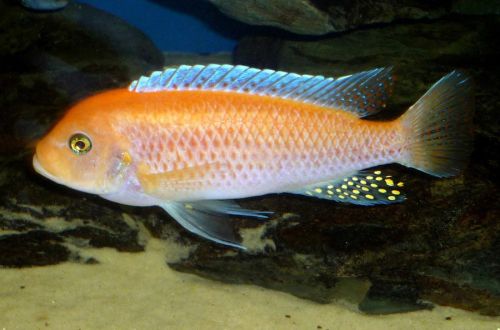
Large-finned corridor
Corydoras large-finned, scientific name Scleromystax macropterus, belongs to the family Callichthyidae (Shell or callicht catfishes). The fish got its name because of the size of the fins, which are noticeably larger than those of other related species.

Contents
Habitat
Catfish is native to South America. Inhabits the Paraná river basin in southern Brazil. It is found mainly in left tributaries and numerous associated rivers in the states of São Paulo, Paraná and Santa Catarina. A typical biotope is a small stream or river flowing under the canopy of a dense forest. The water has a rich brown hue due to the high concentration of humic acids formed as a result of the decomposition of plant organic matter.
Brief information:
- The volume of the aquarium – from 240 liters.
- Temperature – 14-20°C
- Value pH — 5.0–7.0
- Water hardness – 1–10 dGH
- Substrate type – any
- Lighting – subdued
- Brackish water – no
- Water movement – light or moderate
- The size of the fish is 8–9 cm.
- Feeding – any food of suitable size
- Temperament – peaceful
- Keeping in a group of 4-6 individuals
Description
Adult individuals reach a length of 8–9 cm. The body is covered with rows of hard plates instead of scales, for which these fish are classified as armored catfish. The coloration is patterned, consists of dark specks on a light background. Males have longer pectoral and dorsal fins than females.
Food
An omnivorous species, it accepts most of the popular foods in the aquarium trade in dry, freeze-dried, frozen and live form. Since the fish lives near the bottom, it is recommended to serve sinking foods.
Maintenance and care, arrangement of the aquarium
The optimal aquarium size for a group of 4-6 catfish starts at 240 liters. The choice of design does not really matter and depends on the personal taste of the aquarist or is selected based on the needs of other fish. The only thing you should pay attention to is the soft ground and the presence of several shelters at the bottom.
The content is simple, you will need to provide soft, slightly cool water (up to 20 ° C) and prevent the accumulation of organic waste (feed leftovers, excrement, fallen plant fragments) that can disrupt the normal flow of the nitrogen cycle. Maintaining a favorable habitat depends on the regularity of a number of mandatory aquarium maintenance procedures. The latter include weekly replacement of part of the water with fresh water with the same pH and dGH values, which can be combined with waste disposal and soil cleaning, and equipment maintenance.
Behavior and Compatibility
Males of Corydoras largefin are not very friendly towards each other, competing for the attention of females and territory. In a small aquarium, it is recommended to settle only one male in the company with several females. Peacefully tuned in relation to other species. Compatible with fish of comparable size and temperament capable of living in cool water.
Breeding / breeding
Breeding is similar to other Corydoras catfish. Fish form masonry, fixing eggs on any surface, for example, on stones, plants and other design elements, and even on glass. Parental instincts are not developed, so newly born parents can eat their own offspring. For safety, the eggs should be moved to a separate tank filled with water from the main aquarium. The incubation period lasts 3-4 days. In the first days of life, the fry that appear feed on the remains of the yolk sac, then they can switch to specialized products for juvenile aquarium fish (powders, suspensions, Artemia nauplii, etc.).
Fish diseases
The well-being of catfish is completely determined by the environment in which they are located. If the conditions are favorable, the fish receive a balanced diet and are not attacked by other inhabitants of the aquarium, then health problems usually do not arise. When the first symptoms are detected, the first thing to do is to check the composition of the water, the presence of contaminants or the excess concentration of products of the nitrogen cycle. Usually, the restoration of normal conditions helps the fish’s immunity to cope with the problem on its own. If symptoms persist, medical treatment will be required, see the Aquarium Fish Diseases section for details.





